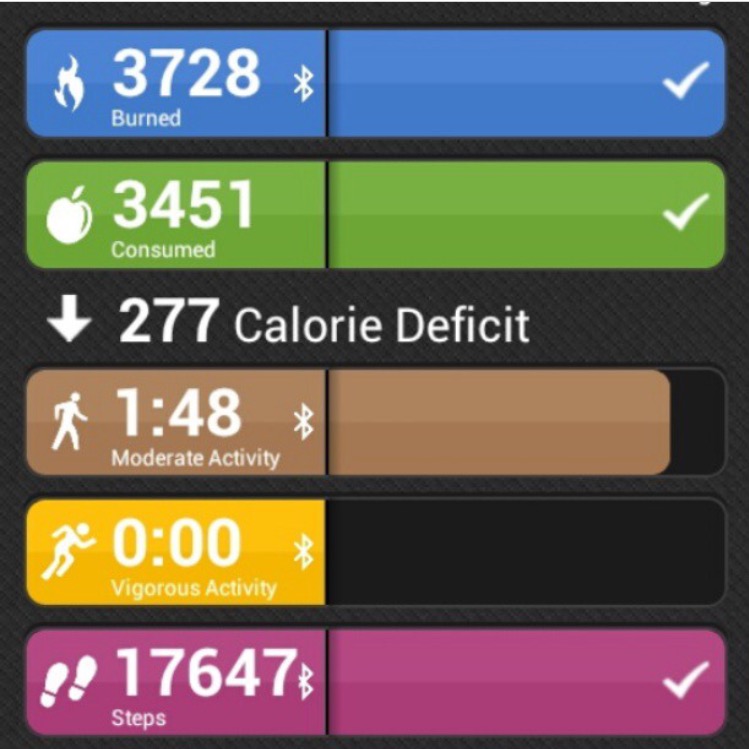
by | Mar 31, 2015 | Increasing calories, Metabolism Reset
 So… You’ve been doing some reading and have come to the conclusion that you have been under-eating, over exercising, and your metabolism is now suffering. You may have also decided that you need to do a metabolic reset in order to get your metabolism back up and running where it should be. Now what?
So… You’ve been doing some reading and have come to the conclusion that you have been under-eating, over exercising, and your metabolism is now suffering. You may have also decided that you need to do a metabolic reset in order to get your metabolism back up and running where it should be. Now what?
The first thing that you need to in order to start this process is to determine your TDEE (Total Daily Energy Expenditure). Your TDEE is the amount of calories that your body requires to maintain your weight. That (TDEE) figure includes your BMR (Basal Metabolic Rate) as well as your normal day-to-day activities plus any formal exercise. In theory — based on this definition — if we eat at our TDEE, we will maintain our weight. The problem is that this theory does not always hold true. When we have been under-eating and over-exercising, our body will adapt to this stress. In an attempt to maintain homeostasis, it will down-regulate the metabolism to match the decreased intake. The result will often be a suppressed metabolism. This explains why suddenly you may find yourself gaining weight while doing hours of cardio and eating 1,200 calories or less a day … your body has adapted! You have decreased your intake and increased your exercise for a long enough period of time that the body has finally slowed down your metabolism to match the intake. Your body is doing what it is supposed to do = maintain homeostasis.
To get your metabolism back up and running where it should be, you’ll need to increase your caloric intake back up to TDEE, or do a Metabolic Reset. To begin this process, the first thing you will want to do is go to an online calculator and enter your stats to get your TDEE (maintenance) calories. This will give you an idea of what your ultimate goal will be. But remember that these calculators just give you estimates. They are subject to error based on how much exercise you input into the calculator and how active you truly are. Many newbies to EM2WL lead very active lives, and may actually burn a lot more through their day-to-day activities. If they simply enter in the 4 hours of formal exercise that they do each week, their final TDEE estimate may actually be too low.
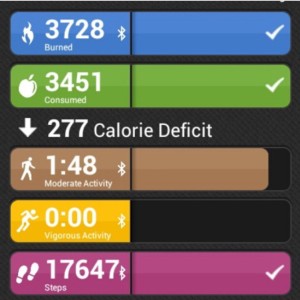
Apps sync to your preferred device to give you an idea of how many cals you burn each day
Alternatively, you can use an on-body device such as a FitBit, or BodyMedia band to get an idea of how much you burn each day. These are likely more accurate than the calculators, just because they’re monitoring how much activity you actually do each and every day. However, these devices are also not 100% accurate because they don’t accurately calculate calories burned from your strength training workouts.
So, where does this leave you? How do you figure out your “true” TDEE? You have your TDEE estimate and/or your “on-body device” average, but ideally you will also test out these numbers and make sure they are truly accurate for you.
The normal process for doing a Metabolic Reset involves increasing your caloric intake up to your calculated TDEE and staying at that level for a minimum of 8 – 12 weeks (much longer if you come from a history of severe dieting or caloric restriction). We generally recommend that you make this increase slowly, adding approximately 50-100 calories to your daily intake each week. Of course, you can certainly jump right up to TDEE quickly (“rip the band-aid”) or make those increases more substantial, but you may find the increases on the scale to be discouraging. By making the increases more gradually, you can often avoid some of the gains seen during the “rip the bandaid” approach. We leave this to the individual as a personal decision.
Now, back to the original question … “How Do I Find My True TDEE?” In order to do this, you will most likely need to go through a trial and error process. You have your calculated TDEE, but how do you figure out if that is “true” or not? As you are going through the process, gradually increasing your daily caloric intake 100 calories a week, keep an eye on the scale. Generally, as you make these increases, you may see the scale jump up a pound or two, and then during the course of the week, it will generally trend back downwards, often ending up right back where you started, pre-increase. As you get closer and closer to your calculated TDEE, you may find that it takes a bit longer for your weight to stabilize and drop back down. At this point, if you find that happening, you may want to take it a bit slower. Then if your weight has not stabilized and dropped back down by the end of the week, wait until it does before making any further increases.

“Activity level” isn’t just about your formal workouts – many moms underestimate activity level
Once you are at or near your calculated TDEE, watch for slow and steady increases on the scale which do not stabilize over time. If you do start seeing gains like this, you have most likely surpassed your TDEE, and which point you can back down on your intake by 100 calories or so and you should be right there — at your true TDEE.
What many people find is that their actual TDEE may be higher than what they get with the calculators. Often their day-to-day activities (chasing kids, doing laundry…etc.) makes them more active than the activity level that they chose when inputting their data into a calculator. We often tend to underestimate how active we are. Many people find that they are actually able to eat 100 or 200 calories more than the calculators give them, simply by “testing the waters” and not blindly accepting those numbers as accurate.
So, give it a try! Surely by now, you have resigned yourself to the fact that this is not a fast process, so take the time to make sure you know your “true TDEE.” Don’t blindly trust the calculators, test it out and see how much you can really eat before you start seeing true gains. Ignore those monthly fluctuations and the jumps that occur after increasing your intake. Keep pushing your intake higher and higher until you start to see slow, steady gains that do not stabilize over time. As hard as it may be, don’t worry about gaining. You can always just drop your intake down and those gains will stop. Remember: nothing that you are doing during this process is irreversible. Take the time to do it right … right from the beginning. You won’t regret it!
Just starting the process and need a step-by-step guide? Get our FREE Quick Start Guide!

by | Mar 18, 2015 | Increasing calories, Metabolism Reset, Testimonials, The Journey
 As you know this has been quite difficult for me. With the past of the eating disorder trying to take control. I have had many slips but never given up. I had anorexia for 10 years, being emaciated, tube fed, detained. Then bulimia for 15 years (nearly 3 years purge free) I have always had a horrible history with food and eating.
As you know this has been quite difficult for me. With the past of the eating disorder trying to take control. I have had many slips but never given up. I had anorexia for 10 years, being emaciated, tube fed, detained. Then bulimia for 15 years (nearly 3 years purge free) I have always had a horrible history with food and eating.
I had known for some time something had to change but I felt I lacked the skills to change this. I felt stuck. I felt powerless. I believed I would have to live the rest of my life diet yo-yoing, a miserable thought. I wanted to change because of my two daughters. I did not want them following my bad habits. I knew what I wanted but how to make it happen?
I spent a decade hating myself, starving myself, purging…my life was a complete mess. I’d go 30 days straight without eating and still exercising, then wondering why I was in hospital being tube fed. I wanted freedom, but I never thought I would be free. I felt like a bird trapped in a cage. My life was the same every day. Get up weigh myself, shower, gym for 2-3 hours. Shower. Go home. School. Home, read ways to burn more calories. Bed. That was my life…then there would be days I’d binge and purge from hunger, enemas, and laxatives. But my life changed for the greater good when I was in hospital detained, being tube fed, not being able to leave bed…I had that light bulb moment. From there on I gained a lot of weight, my body was confused and held onto everything I ate.
What made my recovery harder for me was having 3 miscarriages and having a premature son at 24 weeks who lived 6 days. The guilt. The hate. The anger. The depression. Talk about a major relapse.
Then I discovered EM2WL and this is where my story begins…
I have been sitting here for nearly 30 minutes wondering how to start this entry. I think with last year, trying so hard to lose weight and putting in so much effort and getting very little results has made me think. It’s been something I have been trying to put the pieces together for a little while now.
You’d think with tracking your calories for a year (and honestly) keeping to a 1400 calorie diet and going to the gym nearly every day (burning 400-500 calories) I’d have results. After weeks of trying to find information I came across “Eat More to Weigh Less” I was a little hesitant to go there and look but the other part of me was interested.
 I can starve, I can purge, but for the life of me I cannot get this weight off me healthy. I’m trying to learn, but it is hard!
I can starve, I can purge, but for the life of me I cannot get this weight off me healthy. I’m trying to learn, but it is hard!
Spending hours reading, and talking to people it has been a real eye opener. The amounts they eat and with half the exercise I’m doing and losing weight…I was/am jealous!!! Reading their stories, they were all so similar to mine, their history. Looking at the photos, amazed me. I had to admit I was very interested…
As they say if what you are doing isn’t working then something has to change. I’m ready for change.
I knew how many calories I was eating. I had a start. I went to many TDEE calculators to see what numbers it would give me. These numbers blew me away, I couldn’t believe it. It took me days for this to sink in and make some sense. My TDEE was just over 2700!!! For weight loss 2200, my jaw dropped.
I had a random thought last night, before the birth of my youngest daughter, Jasmine, I lost weight easily because I was eating more and not killing myself at the gym. Things were starting to click with me. Maybe this was the missing piece of the puzzle I needed.
I spent the past four weeks bringing my calories from 1400 to 1600 calories. I have had to change my exercise because I am draining myself, giving myself no rest or time to recover.
So I have had to make two massive scary changes.
1) Eat more
2) Less HIIT
So, right now I am working on doing HIIT 3 times a week and eating 2200 calories. No less than 2000 calories a day, no excuses.
I can do this, because I want this. This will be my year.
It has been a real challenge, good and bad, but mostly good. I have been doing a metabolism reset for nearly two months. When I first started I was on average 1400-1500 calories. I was always hungry on that, grumpy because I was hungry, the list goes on. Over the past two months I have been adding to my calories. Normally 100 calories every week, sometimes I’d stay there for two weeks. After all there was no rush, I wanted this to be for life, not just for now.
 At this current moment I’m at 2000 calories. I’ve had so many challenges and fears to overcome. The two main ones were:
At this current moment I’m at 2000 calories. I’ve had so many challenges and fears to overcome. The two main ones were:
1) I cannot eat that much. Yes I can. It’s been a process, but I can. It’s actually quite easy. A serving of mixed nuts, there is 200 calories. Not crap food but food that will make me grow strong. If I have too many calories left over I’ll have a banana smoothie, or a small bowl of ice cream. I have added food back into my diet that I thought was too high in calories… nuts, seeds, peanut butter, a glass of milk. Oh my how I love nuts!!! Little things but it all adds up. I always feel so hungry lately, it feels completely weird. I have had to learn how to balance out my food over the day, a little planning goes along way.
2) I will gain too much weight. Oh my how this did my head in… If I was eating 1300-1400 calories and not losing and gaining how could this possibly work?! But I knew in my heart, that something had to change…and now. While doing this I have not gained ANY weight. I was scared I would gain so much weight. Yet I haven’t gained ANY weight. This has really played with my head and done amazing things.
Everything I believed about eating X and no more than X calories for so long, has been so wrong. It has been life changing. I have always been jealous of people who could eat so much and gain nothing… This has been the biggest hurdle for me in my recovery. I’d eat ‘normal’ amounts and gain. Then I’d go back to what I knew worked for me, yet in reality it was only screwing me up more. My goal is to get my calories up to my TDEE (2600/2800 calories) then drop it to 2200/2400 calories. From my understanding once I’ve been at these calories for two months and do a cut I should start to lose weight.
This is not easy for me, while doing this I have had to challenge so many of my core beliefs, it is hard but it has been worth it. I just wish I knew about this much earlier. I’m really enjoying this journey, I’m really enjoying the food. I love this, this is an amazing journey…thank you for sharing it with me.
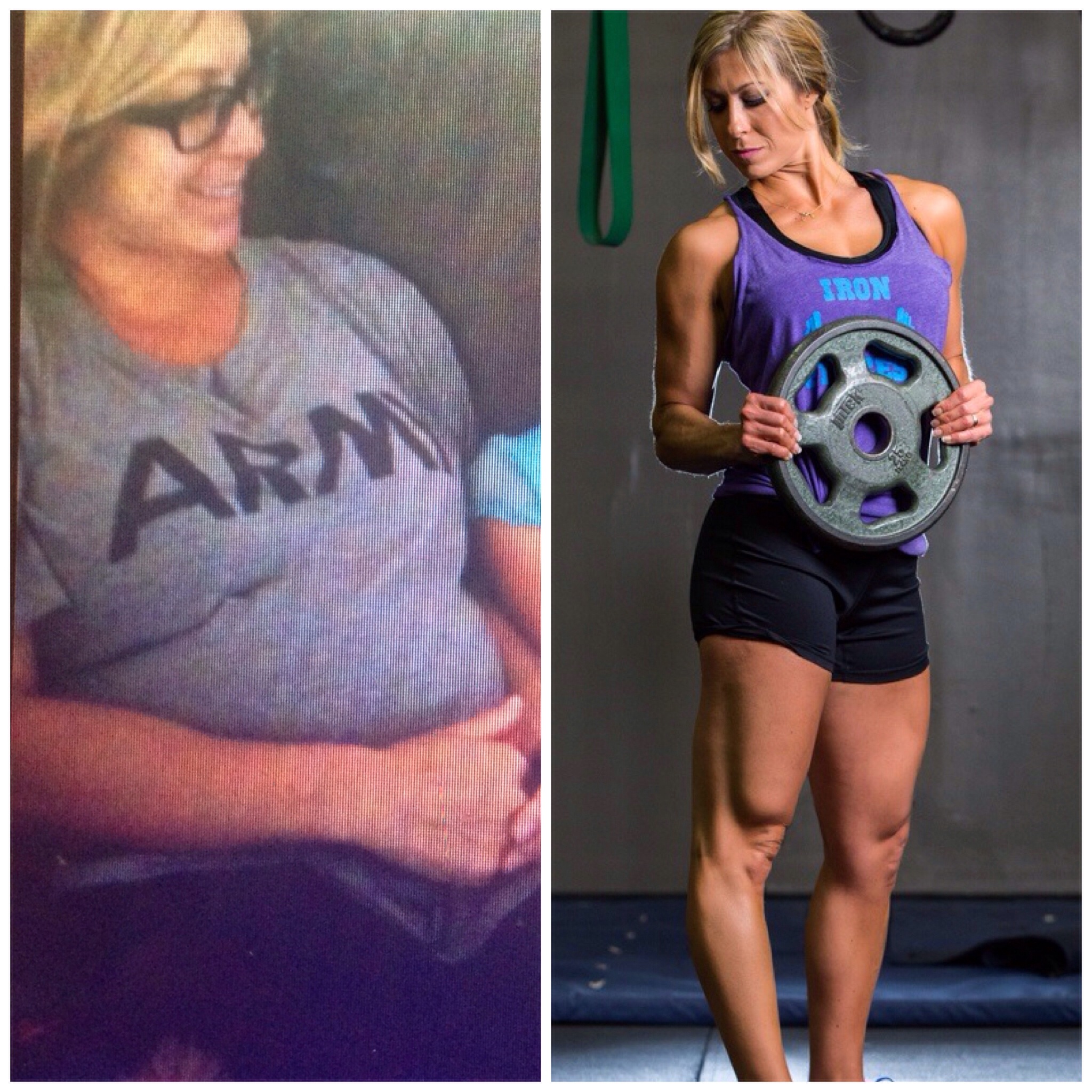
by EM2WL | Mar 10, 2015 | Current Fitness Competitors, Fat Loss / Cutting, Interviews/Guest Posts, Self Acceptance, Strength Training
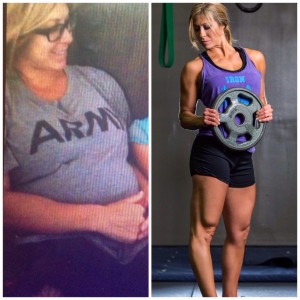 EM2WL: Like so many of us, you bought into the eat less move more propaganda. You talked about being at your ideal scale weight but your body still not looking the way that you wanted. What was the turning point for you and what steps did you take to make a change?
EM2WL: Like so many of us, you bought into the eat less move more propaganda. You talked about being at your ideal scale weight but your body still not looking the way that you wanted. What was the turning point for you and what steps did you take to make a change?
Christie: It’s true, I ran more and ate less thinking being smaller (on the scale) would get me closer to my ideal “look.” My moment of change came when a trainer at my gym noticed my athletic drive, asked if I’d consider a figure competition (had no clue what it was, did my research and saw the look I wanted). I dived in and quickly learned I needed to eat more, run less, and train smarter to change my body. I stopped cardio almost completely, lifted 4-5 days a week hitting each body part, and made sure I was eating enough to support my goals.
E: You used to be a runner, right? Where do runs fit in your regimen now?
C: I do love what a run can do for the spirit, and will do so when I feel the need, but I do s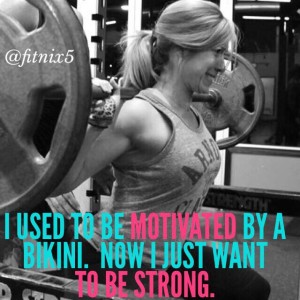 prints mostly now, for 10-12 minutes, and that’s the extent of my running. 30 seconds on and 30 seconds off.
prints mostly now, for 10-12 minutes, and that’s the extent of my running. 30 seconds on and 30 seconds off.
Here is a blog I wrote specifically to running vs. lifting and my body/mindset.
http://www.fitnixfitness.com/2014/09/09/running-vs-lifting/
E: What advice do you have for women who are pregnant and worried about ‘ruining’ their body, or postpartum and scared that they’ll never get their pre-baby body back?
C: You aren’t ruined, changed, yes, ruined, no!! I love that I can share my postpartum journey, pregnancy takes over my body, regardless of my efforts, I gain a lot, and lose all muscle tone…basically, if I chose to accept the mentality that I was ruined, I most certainly would look that way. My advice, know what you want, do your part each day, give yourself the GRACE you would a friend to get there, and your body will take form like you never thought possible. You’re a mom now also, training is about more than a look at this point, it’s a break, a spiritual release, and being strong means more than a look…you’ll find the journey to inner strength will take you farther than any “body after baby” goal ever will.
 E: Switching gears to your figure competition diet and prep…People often hear of a competitor doing a 9,12, 20 week, etc competition prep and feel that their own journey should be “finished” within similar lengths of time. How long would you say the time was between giving birth and the “official” beginning of prep for your recent return to the stage? (In other words, how much “pre-prep” prep?)
E: Switching gears to your figure competition diet and prep…People often hear of a competitor doing a 9,12, 20 week, etc competition prep and feel that their own journey should be “finished” within similar lengths of time. How long would you say the time was between giving birth and the “official” beginning of prep for your recent return to the stage? (In other words, how much “pre-prep” prep?)
C: Great question!! I knew I wanted to compete at least once more after baby #3 so I trained with that in mind. I just recently picked a show in April and started my actual prep in January, knowing I did my part the past year to facilitate a healthy and balanced approach to the stage. So 17 months or so of training and proper nutrition, and 4 months of actual prep.
E: There seems to be a divided camp these days. Do you feel that it’s possible for women to practice both body acceptance AND seek improvements at the same time?
C: I couldn’t agree more. Sometimes I wonder where I fit…and my answer is YES!!!
My self-love, acceptance, and perspective doesn’t come from how I look, it comes from God!! But God also put a fire in me to do more, be more, strive for more…for now that takes on the form of competing in the sport of Figure. While it is extremely subjective, I know that I am giving it my all and will hit the stage with that attitude. The idea of seeing what I’ve worked for on stage, taking time to assess my progress and continue to strive for more excites and pushed me!
However, competition or not, the gym is where I look to be judged, am I getting stronger, am I doing a little of what scares me, am I lifting more and moving better…being fit and striving for more has so much more to do with how you feel than how you look!!!
E: Has any of your body composition changes affected the way that you dress, clothing size/style?
 C: Actually…no…I weigh the most I ever have and wear the same size pants. I naturally have a wide frame around my lats, so now I’ve embraced that and know to grab a medium top first and go from there. Doesn’t mean I’m fat, need to lose weight, or should restrict things from my diet, just means I’m better at those pull-ups I’m always trying to perfect.
C: Actually…no…I weigh the most I ever have and wear the same size pants. I naturally have a wide frame around my lats, so now I’ve embraced that and know to grab a medium top first and go from there. Doesn’t mean I’m fat, need to lose weight, or should restrict things from my diet, just means I’m better at those pull-ups I’m always trying to perfect.
E: Moms often feel the pull between fitness, career goals, and spending enough time with their family. With 3 kids of your own, a personal training/nutrition coaching business and preparing for return to the stage, how do you keep everything in balance?
C: The best part of being a fit mom, is working with other fit moms…they understand. So I have set hours for work and the rest is family time. I look at my mom duties, schedule, errand routine, and plan my fitness business around that. As for my training, its an appointment with myself also. I block off time to do that as well.
As for competition prep on top of all that…I took the past 15 months as a part-time working mom of three to fine tune the habits I’d need to do a Figure show, learning how to balance the family, training, work and meal planning. And I have to admit I’m a big fan of a meal replacement shake for on the go!!
E: Where would you suggest a new mom start with getting back in shape?
C: I love this quote, “start where you are, use what you have.” And that’s the secret, you just have to start. If you love to run, make a plan and go run, if you want to lift weights, hire a trainer and learn your way around the gym, join a cross fit box, there are so many people out there waiting to help you, invest into yourself and go for it!! Start small and build from there!!
E: How can our readers hear more from you?
C: Would love the company of any of your followers on my social media sites,
Website: fitnixfitness.com
Facebook: facebook.com/fitnix5
Pinterest: pinterest.com/fitnix5
Instagram: instagram.com/fitnix5
Twitter: twitter.com/fitnix5
Youtube: Christie Nix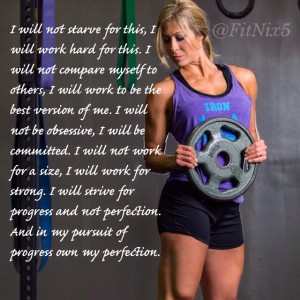

by EM2WL | Mar 4, 2015 | Building Muscle, Strength Training, TDEE/BMR
If you’re stuck in a relationship with your scale — using it as the primary tool of measuring the success of your diet and workout program — then it’s time to break up! Using the scale to gauge your success may tell you if you are losing weight or not, but it will not tell you about the QUALITY of the weight that you are losing. You have no way of knowing if those losses that you may be seeing are fat, water, or even worse, muscle!
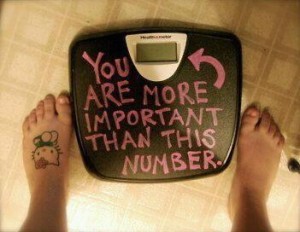 The diet industry has done very little to change this perception. Advertisements continually pound consumers with promises for quick and permanent weight loss, often through decreased caloric intake and increased exercise (“eat less, move more”). Although this may result in a significant (scale) weight loss, initially, what is not taken into account is that much of what these consumers will be losing is muscle, rather than fat. This muscle loss is a primary reason that weight gain will likely occur when they are no longer able to maintain this low calorie/high exercise regimen. Every dieter has experienced this “fall off the wagon” weight gain upon returning to their previous eating habits. Plain and simple: if your weight loss plan results in muscle loss rather than fat loss, your metabolism will soon be in trouble!
The diet industry has done very little to change this perception. Advertisements continually pound consumers with promises for quick and permanent weight loss, often through decreased caloric intake and increased exercise (“eat less, move more”). Although this may result in a significant (scale) weight loss, initially, what is not taken into account is that much of what these consumers will be losing is muscle, rather than fat. This muscle loss is a primary reason that weight gain will likely occur when they are no longer able to maintain this low calorie/high exercise regimen. Every dieter has experienced this “fall off the wagon” weight gain upon returning to their previous eating habits. Plain and simple: if your weight loss plan results in muscle loss rather than fat loss, your metabolism will soon be in trouble!
The Importance of Muscle
Muscle is so important because it is essential for maintaining one’s BMR (Basal Metabolic Rate). Your BMR is responsible for approximately 2/3 of your daily caloric burn or TDEE (Total Daily Energy Expenditure). Without muscle mass and fuel (food), your metabolism will soon likely slow to a crawl. Indiscriminately dieting and exercising without the end goal being muscle gain (or at least maintenance) is a sure recipe for disaster: muscle LOSS.
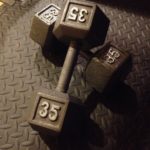 Losing all of that valuable, metabolically active muscle mass, is setting yourself up for a rebound weight gain. You can’t maintain a very low caloric intake combined with excessive cardio workouts, so you’ll inevitably return to your old eating habits — or perhaps continue to restrict — but now with occasional all-out binges thrown in. With your muscle-deficient metabolism creeping along at an all-time low, this increased intake will inevitably result in weight (fat) gain. Following a low calorie diet combined with (often excessive) aerobic exercise will most likely result in an initial scale weight loss, but if the loss is muscle rather than fat, this scenario is setting you up to become a smaller, flabbier version of your current self (the dreaded “skinny fat”).
Losing all of that valuable, metabolically active muscle mass, is setting yourself up for a rebound weight gain. You can’t maintain a very low caloric intake combined with excessive cardio workouts, so you’ll inevitably return to your old eating habits — or perhaps continue to restrict — but now with occasional all-out binges thrown in. With your muscle-deficient metabolism creeping along at an all-time low, this increased intake will inevitably result in weight (fat) gain. Following a low calorie diet combined with (often excessive) aerobic exercise will most likely result in an initial scale weight loss, but if the loss is muscle rather than fat, this scenario is setting you up to become a smaller, flabbier version of your current self (the dreaded “skinny fat”).
If weight loss is your goal, then you want to make sure that what you are losing is truly fat, and not metabolism-fueling muscle mass. The body naturally burns more calories each and every day to support a pound of muscle than it does to support a pound of fat (which is metabolically inactive), so the end goal should be to have as much muscle as possible in an effort to keep the metabolism running at a high rate.
What does this have to do with the scale?
Muscle is dense and, by volume (the amount of space it occupies on your body), weighs much more than the flabbier fat. The end result: if you build some *heavier* muscle, your body will appear smaller and tighter due to the dense nature of muscle, but the scale may not show much movement downwards. Hence the reason to not put a lot of emphasis on the number that you may see on the scale.
 Other than the scale, there are many ways to monitor progress, from the most basic, right up to the most technologically advanced methods (BodPod testing, Bio-electrical Impedance, skin-fold caliper testing, measurements and simply taking progress photos all can be very useful). If nothing else, everyone should start with a set of progress photos and update them on a monthly basis. Once you begin strength training, you will be glad you did!
Other than the scale, there are many ways to monitor progress, from the most basic, right up to the most technologically advanced methods (BodPod testing, Bio-electrical Impedance, skin-fold caliper testing, measurements and simply taking progress photos all can be very useful). If nothing else, everyone should start with a set of progress photos and update them on a monthly basis. Once you begin strength training, you will be glad you did!
So what can you do to ensure long-term success? Invest some time in some strength training. Build some metabolically active muscle in an effort to keep your metabolism running at optimal levels. Just doing plain old cardio or aerobic exercise will do little if nothing to build muscle, and in fact, doing too much will actually begin to break down that hard-earned muscle tissue. The best thing you can do for yourself and your metabolism is to build some muscle tissue. Not only will you be physically stronger, but you will be less susceptible to injury, and your body composition will begin to change and improve over time. Soon you will notice that you can fit into clothes which were previously too tight, even though the scale is not really moving. Being strong is also empowering!
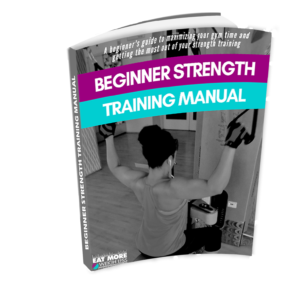 When considering a nutrition and exercise program, muscle growth and maintenance should be “front and center.” Seek out a good, periodized strength training program and start to challenge yourself. Confused as to where to start? Check out EM2WL’s Beginner Strength Training Manual for answers to the most frequently asked questions, as well as a complete 12-week workout plan, access to a *bonus* private area with video demonstrations of each exercise, & a place for any other questions you have along your journey. Combine strength training with fueling your body properly by eating at or slightly below your TDEE (Total Daily Energy Expenditure) and you will be on the road to success!
When considering a nutrition and exercise program, muscle growth and maintenance should be “front and center.” Seek out a good, periodized strength training program and start to challenge yourself. Confused as to where to start? Check out EM2WL’s Beginner Strength Training Manual for answers to the most frequently asked questions, as well as a complete 12-week workout plan, access to a *bonus* private area with video demonstrations of each exercise, & a place for any other questions you have along your journey. Combine strength training with fueling your body properly by eating at or slightly below your TDEE (Total Daily Energy Expenditure) and you will be on the road to success!

 So… You’ve been doing some reading and have come to the conclusion that you have been under-eating, over exercising, and your metabolism is now suffering. You may have also decided that you need to do a metabolic reset in order to get your metabolism back up and running where it should be. Now what?
So… You’ve been doing some reading and have come to the conclusion that you have been under-eating, over exercising, and your metabolism is now suffering. You may have also decided that you need to do a metabolic reset in order to get your metabolism back up and running where it should be. Now what?





 At this current moment I’m at 2000 calories. I’ve had so many challenges and fears to overcome. The two main ones were:
At this current moment I’m at 2000 calories. I’ve had so many challenges and fears to overcome. The two main ones were:












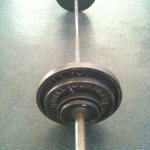
Recent Comments